Cutting-Edge Research at The Hong Kong Polytechnic University Advances Global Sustainability
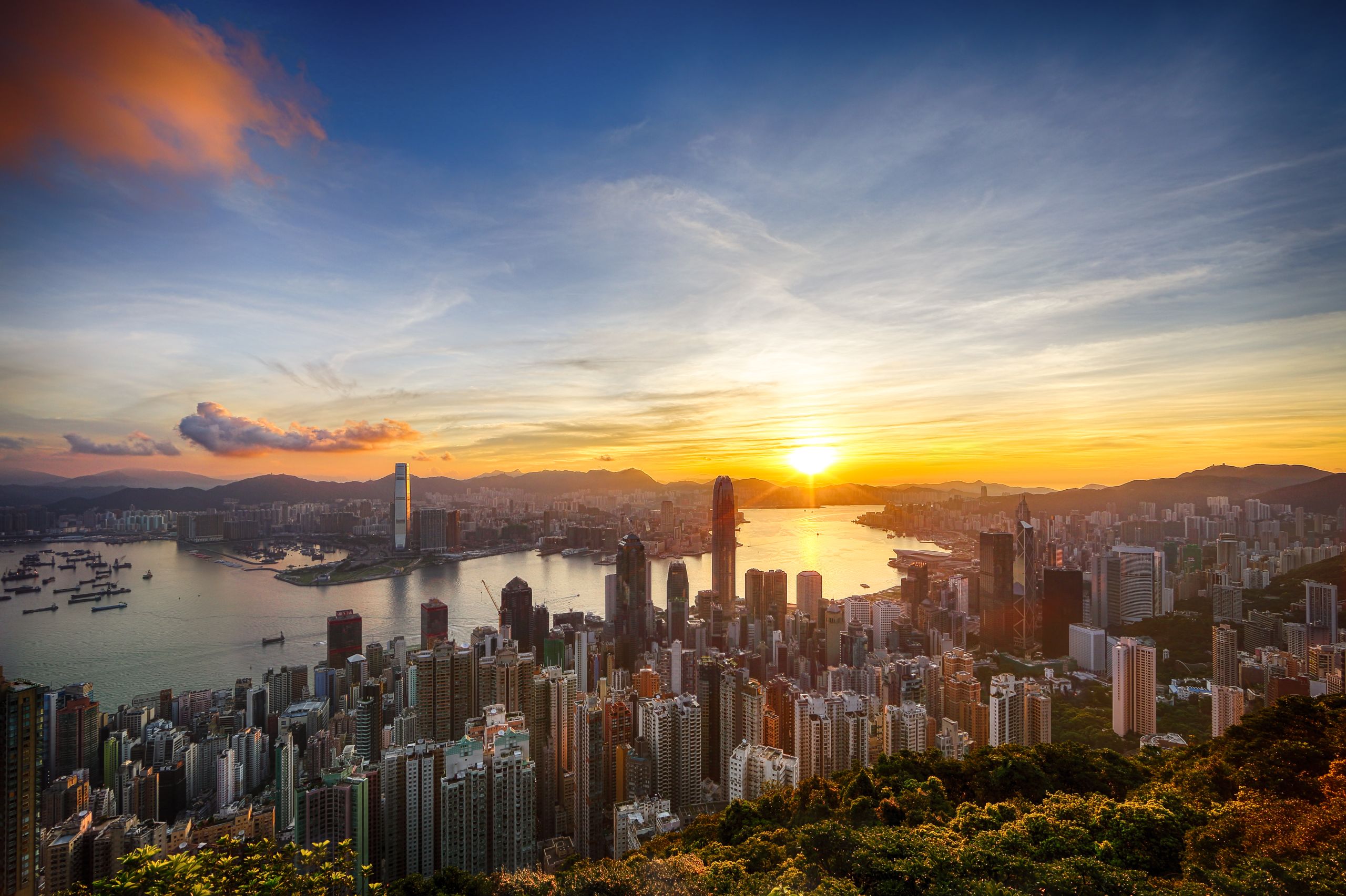
As a world-class research university, The Hong Kong Polytechnic University (PolyU) is helping to solve many critical challenges facing our world today and tomorrow. As it pursues scientific investigations for the benefit of Hong Kong, China and around the world, the University is encouraging and challenging critical thinking among its students and researchers.
“Our researchers are making bold advances that break new ground,” says Prof. Jin-Guang Teng, PolyU’s President. “Through their dedicated efforts in areas such as biotechnology, sustainable development, new materials, artificial intelligence, robotics, data science and food technology, they are solving pressing global problems and contributing to a better world.”
Many of these innovative endeavors have received substantial support from the government-funded Research Grants Council (RGC). In three consecutive years, we have obtained funding under RGC’s Theme-based Research Scheme for three major research projects that are expected to lead to groundbreaking discoveries to enhance sustainability and smart city development.
Reducing Photochemical Air Pollution
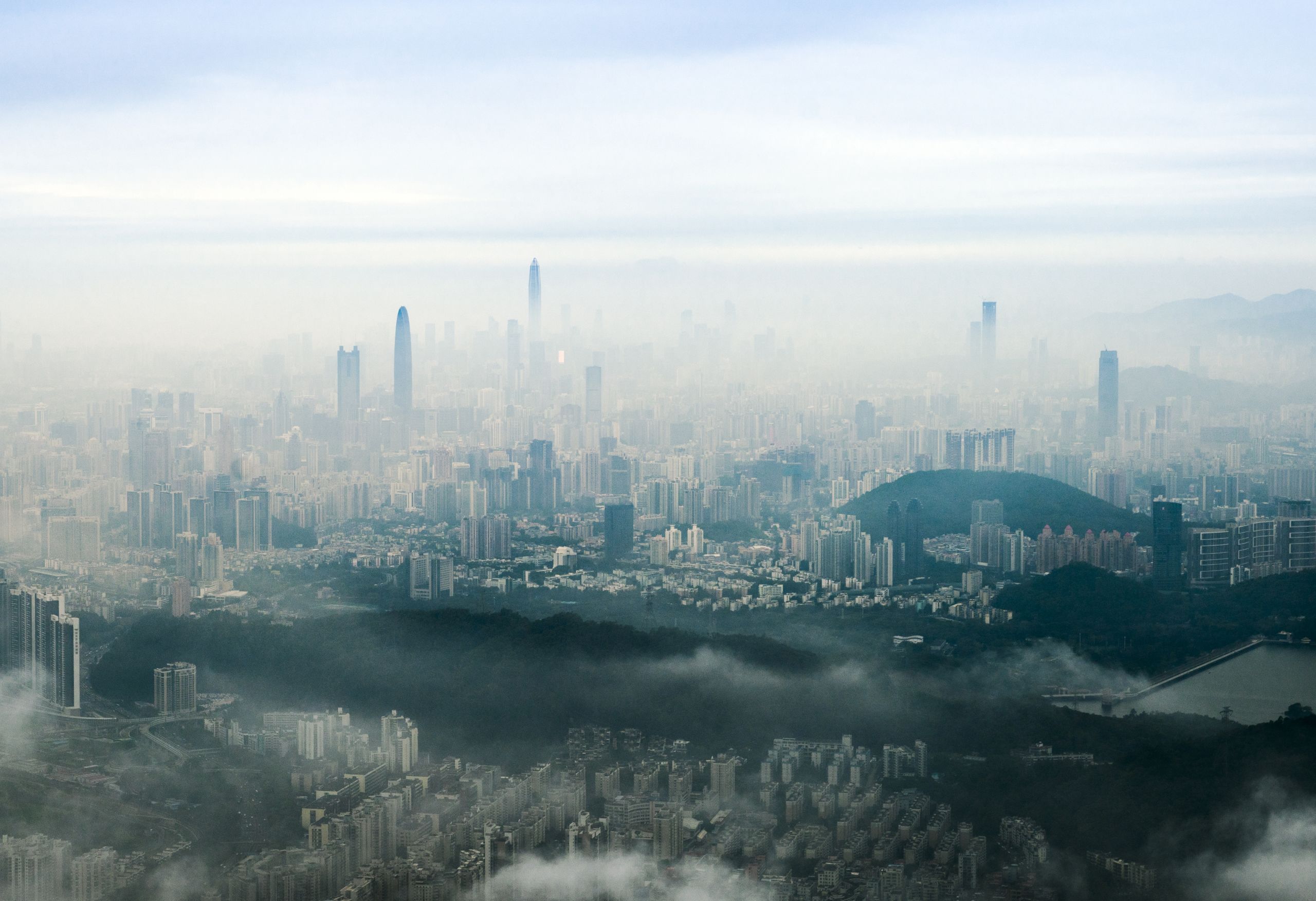
A critical global concern for researchers at PolyU is photochemical air pollution. More commonly called smog, it is a distinct type of air pollution that occurs when air movement is restricted, filling the environment with a mixture of several compounds, including ozone. The mixture reduces visibility, causes eye irritation, cracks rubber in tires, and often damages vegetation, resulting in an economic loss for farmers and commercial growers.
This type of air pollution is most common in highly motorized or heavily industrialized cities, ranging from Hong Kong to Los Angeles to Jaipur, India. Hong Kong and the adjacent Pearl River Delta together represent one of the most populated and economically vibrant regions in China. However, the rapid consumption of fossil fuel in this area has deteriorated the air quality. Even though the governments have tried to reduce the pollution levels, photochemical pollution in the region has not improved much.
“Addressing these issues is crucial in formulating effective mitigation strategies for urbanized subtropical and vegetated regions,” says Prof. Wang, a chair professor in atmospheric environment at PolyU. Prof. Wang and his research team are studying the complex emissions from vehicle exhaust, industrial operations, and other sources on land and at sea, so they can recommend the best strategies to mitigate photochemical pollution. They are also trying to develop more effective modeling systems with better predictive capability for use in complex geographical areas.
Supported by a grant of over $4.2 million (HK$33 million), the PolyU scientists are working on this five-year project with experts at the Max Planck Institute for Meteorology in Germany and the National Center for Atmospheric Research in the U.S., as well as with researchers from the Chinese Academy of Sciences, the University of California at Berkeley, the Chinese University of Hong Kong, the Hong Kong University of Science and Technology and the University of Hong Kong.
“Overall, our goal is to conduct world-class research and to strategically support developing a green Hong Kong, China, and Asia,” says Prof. Wang.
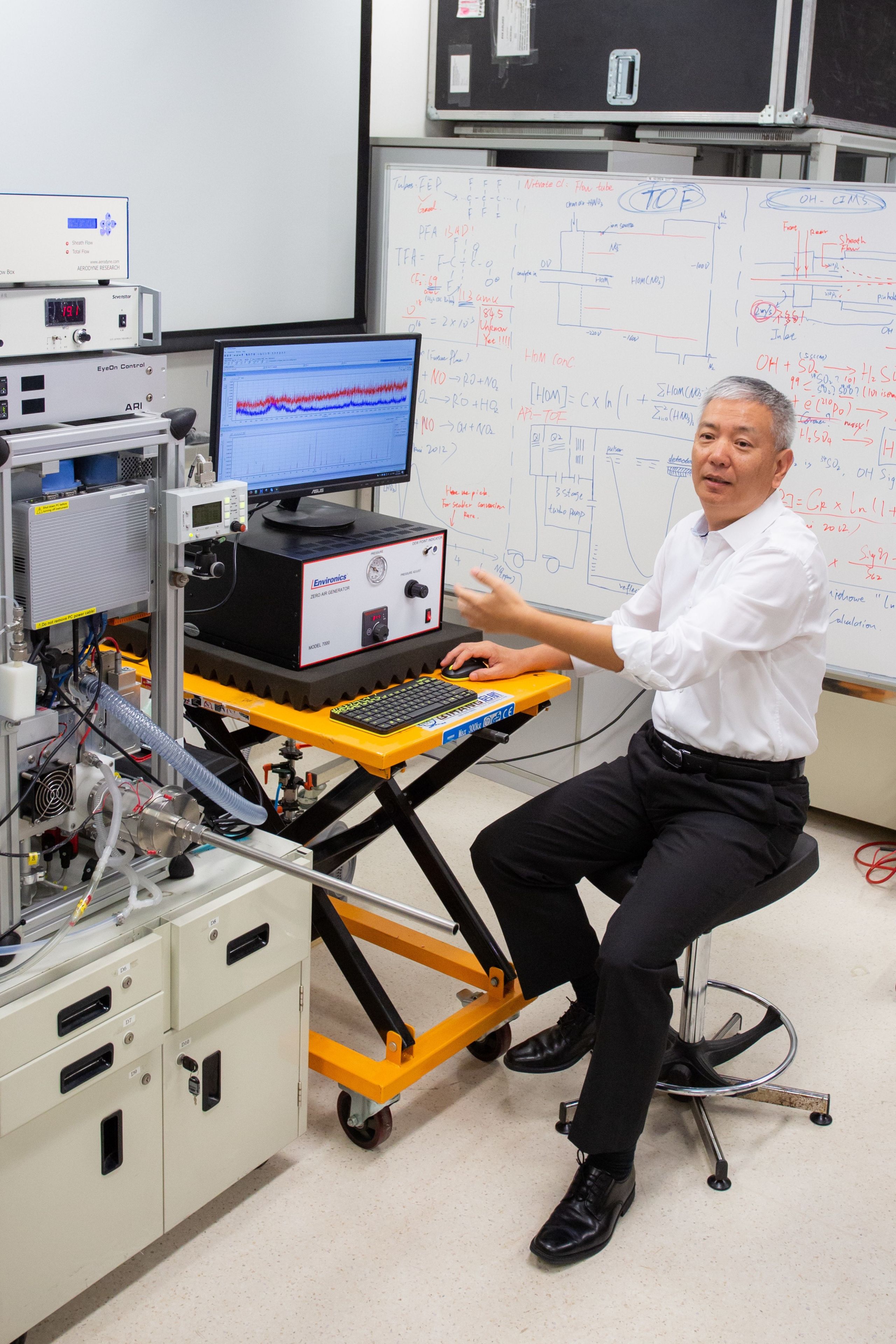
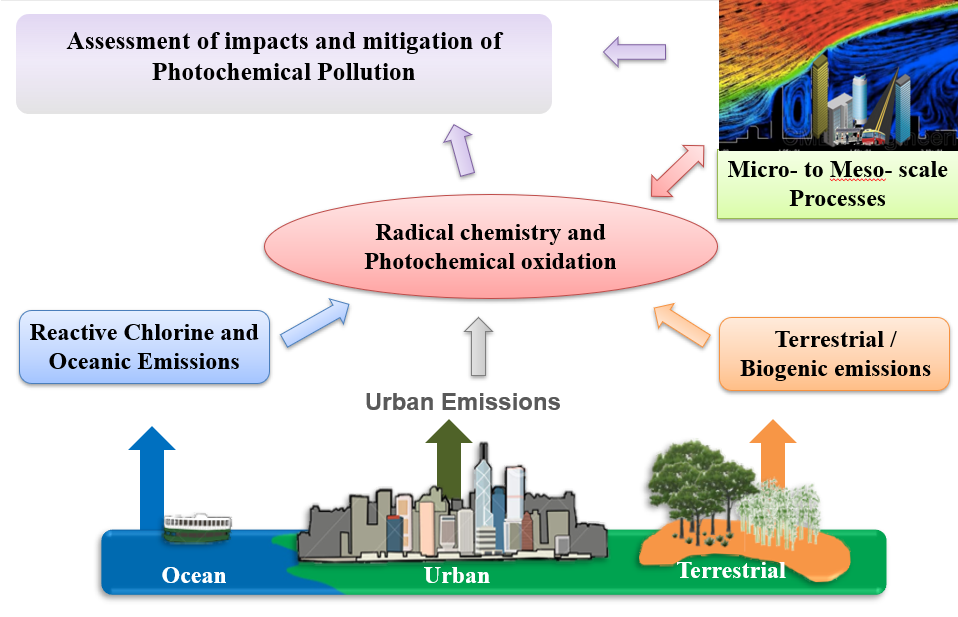
Developing Sustainable Marine Infrastructure
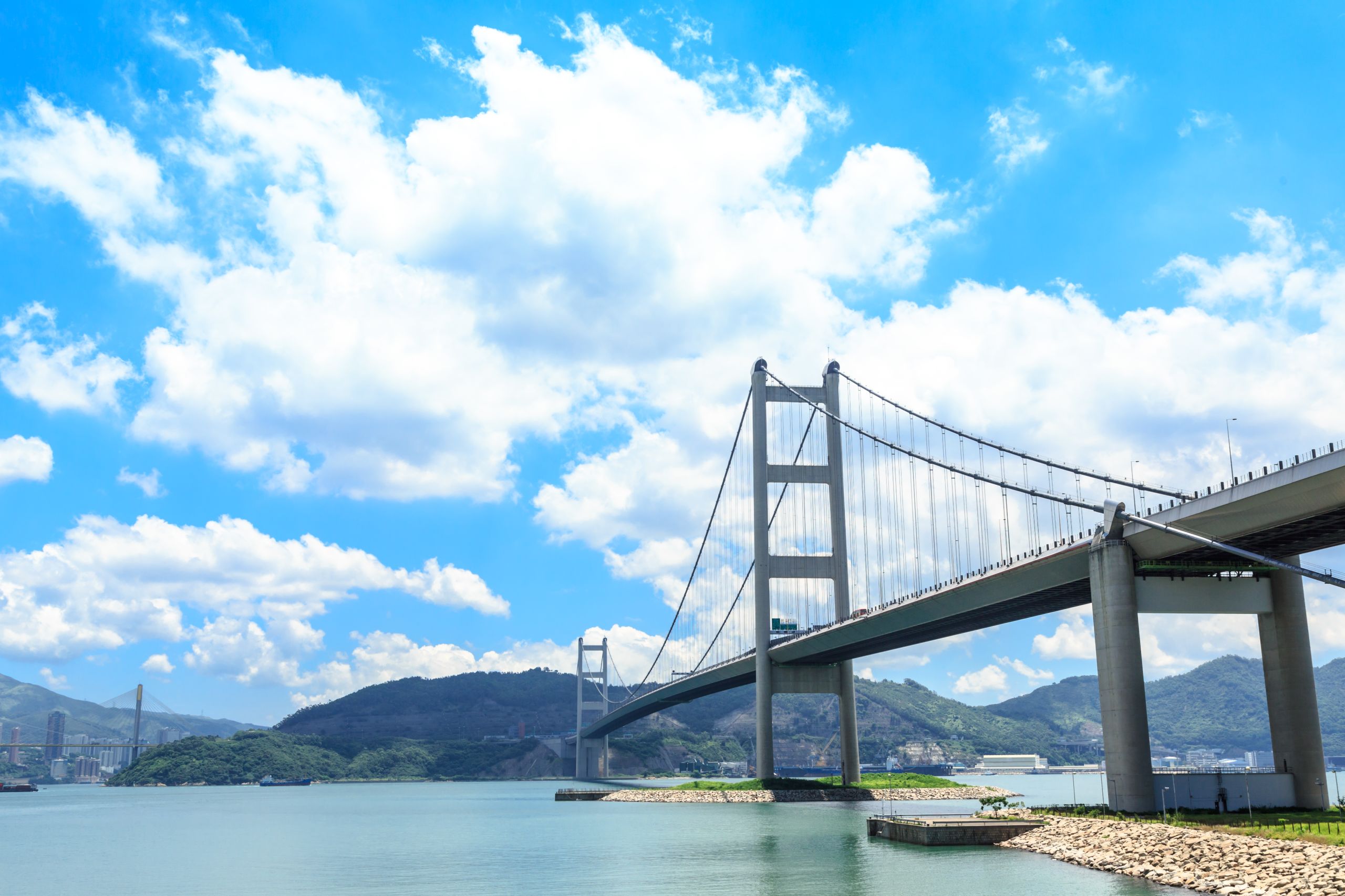
Another example of such cutting-edge research is the project led by President Teng, who is a distinguished scholar in the field of structural engineering, which seeks to achieve more sustainable infrastructure in coastal regions. The project, to be completed by December 2024, is supported by a grant of over $6.6 million (HK$52 million).
Coastal cities like Hong Kong rely heavily on ports, bridges, artificial islands, offshore wind farms, and other coastal and marine infrastructure for social-economic development. Many of these structures are constructed with steel or concrete reinforced with steel. In a marine environment, steel without proper protection corrodes quickly, leading to severe deterioration of the structure. Steel corrosion typically costs an economy around 3% of its gross domestic product, or in Hong Kong’s case, in 2018, around $10.8 billion (HK$85 billion).
A very promising solution to the steel corrosion problem in marine reinforced concrete structures is to replace steel with corrosion-resistant fiber-reinforced polymer (FRP) as the reinforcing material. Once FRP is used, seawater and sea sand, which cannot be used in concrete structures with steel reinforcement, can be directly employed to make the seawater sea-sand concrete (SSC). This innovative concept, proposed by President Teng, is especially attractive for the development of marine infrastructure on islands and in other locations where there is a shortage of fresh water and river sand. The FRP-SSC structural technology is expected to be a major breakthrough in the construction of marine infrastructure as it will greatly extend its lifespan and, at the same time, help protect the natural environment.
The inter-disciplinary research team includes members from both local and overseas universities. These include the City University of Hong Kong, City, University of London, Delft University of Technology, the Hong Kong University of Science and Technology, Massachusetts Institute of Technology, the University of Hong Kong, the University of Illinois Urbana-Champaign, the University of Macau and Vanderbilt University. Together, the scientists are developing new structural forms that take advantage of the strengths of both FRP and SSC, and examining in depth the behavior of these structures. In so doing, they are aiming to establish new methods for design, construction and performance monitoring that would allow this new type of structures to be widely used. A key challenge for the team is the establishment of a multi-scale, multi-physics approach for predicting the long-term performance of these structures.
“These structures will revolutionize the construction of marine infrastructure,” says President Teng, adding that “great environmental and economic benefits can be derived not only for Hong Kong, but also for the nation and the whole world.”
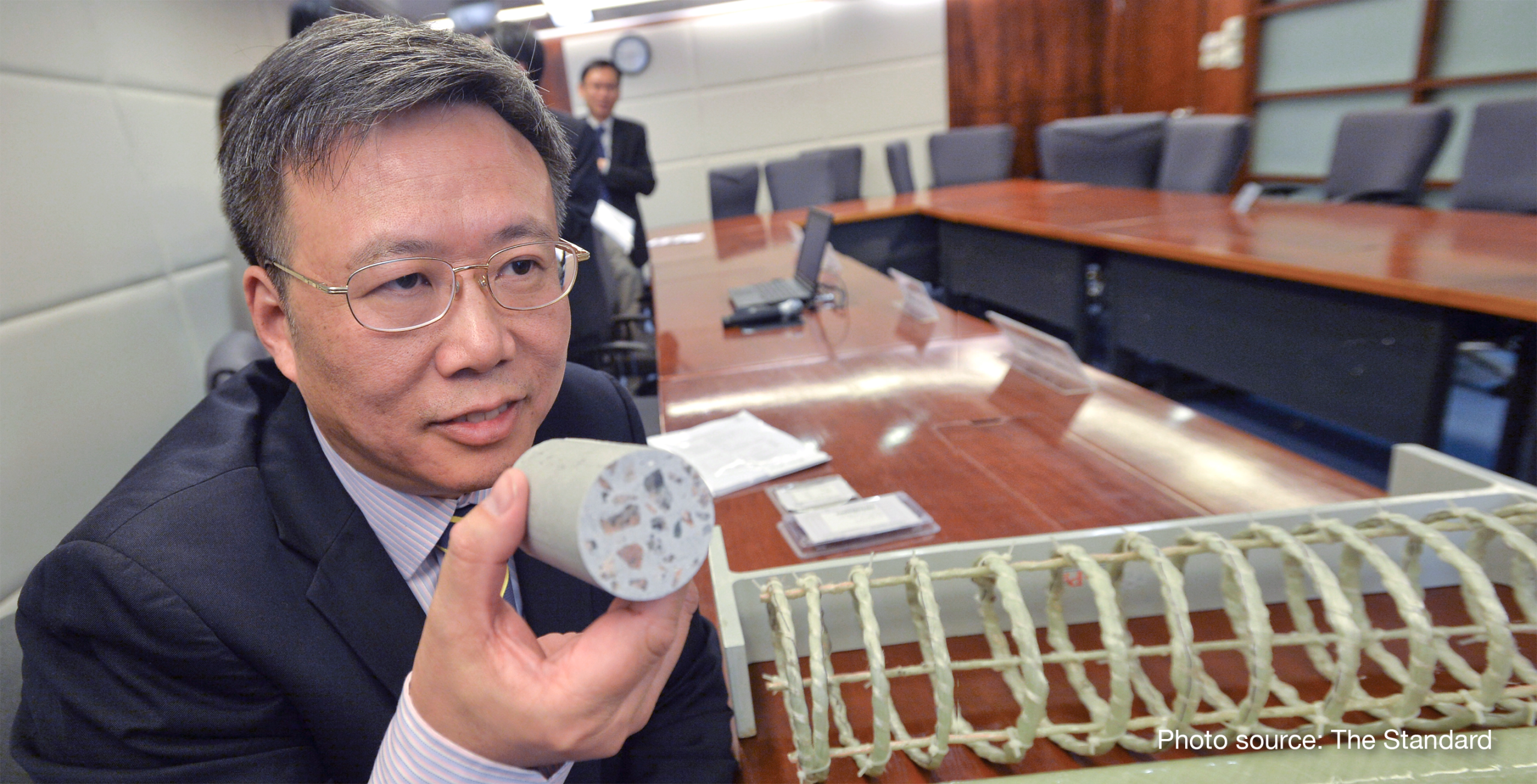
Increasing Urban Resilience with Smart Firefighting

As urban areas grow in population and become more sustainable, fire safety is becoming a bigger concern. According to the World Bank, roughly 1.4 million people are moving into urban areas around the globe each week. In many cases, they are moving into high-occupancy buildings that have been renovated or newly constructed, often with higher efficiency systems and greener technologies.
PolyU researchers reckon that the new trends in urban development are changing the nature of the threat from fire. Previous safety strategies are no longer effective, leaving firefighters to face unpredictable hazards.
In June 2017, for example, a fire broke out in Grenfell Tower, a 24-story residential building in London. Seventy-two people died, and more than 70 were injured. In a refurbishment about a year before the tragedy, more cost-effective yet less fire-resistant aluminum cladding was installed on the building’s exterior. This was one reason for flames spreading rapidly up the outside of the building during the accident.
PolyU researchers predict that a strategic use of smart-city technologies could prevent or lessen the effect of similar tragedies. The University’s fire research efforts, led by Prof. Asif Sohail Usmani, a PolyU expert in building services engineering, bring together researchers from engineering, computing, building and real estate, as well as land surveying and geo-informatics. Scientists from the University of Hong Kong, University of Edinburgh, University College, London and Tsinghua University are also contributing, as well as government agencies and high-tech companies. Supported by a grant of over $4.2 million (HK$33 million), in this five-year project the collaborators are conducting foundational research on fire prediction, prevention and control, and emergency management as well as developing a smart firefighting system for use in highly densely populated urban environments.
Researchers are hoping to develop a workable prototype to test in a real urban area, like Hong Kong. “An urban environment that is not resilient cannot be considered sustainable,” says Prof. Usmani.
Through the scientific work of Usmani and other dedicated researchers, PolyU is positioned to make a positive impact on the environment, industry and communities throughout Hong Kong – and beyond.



